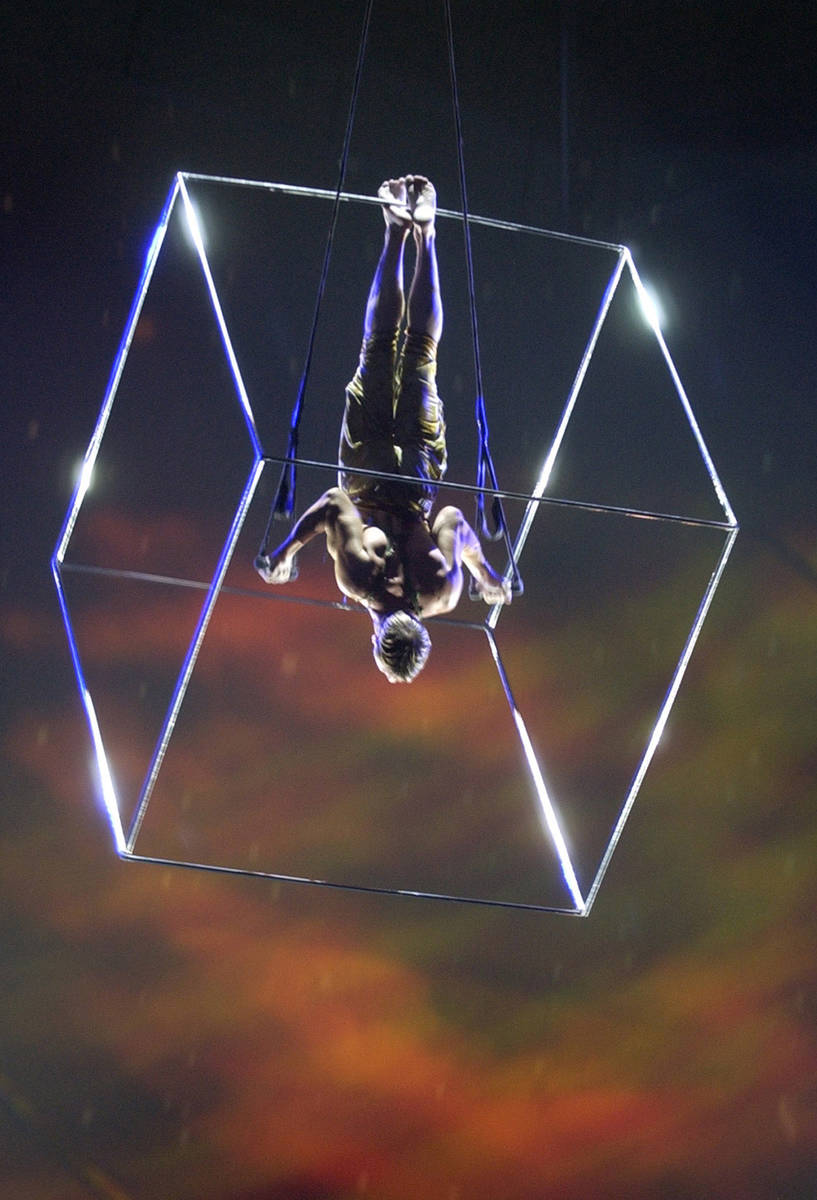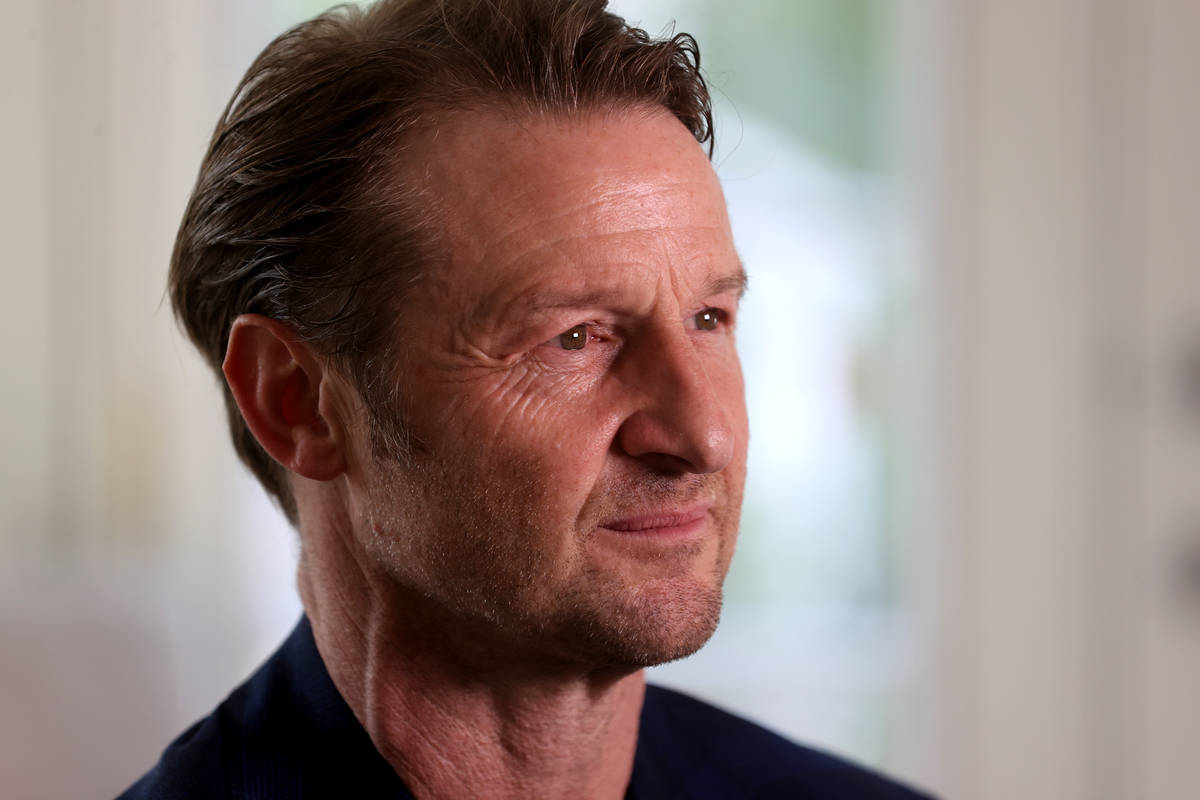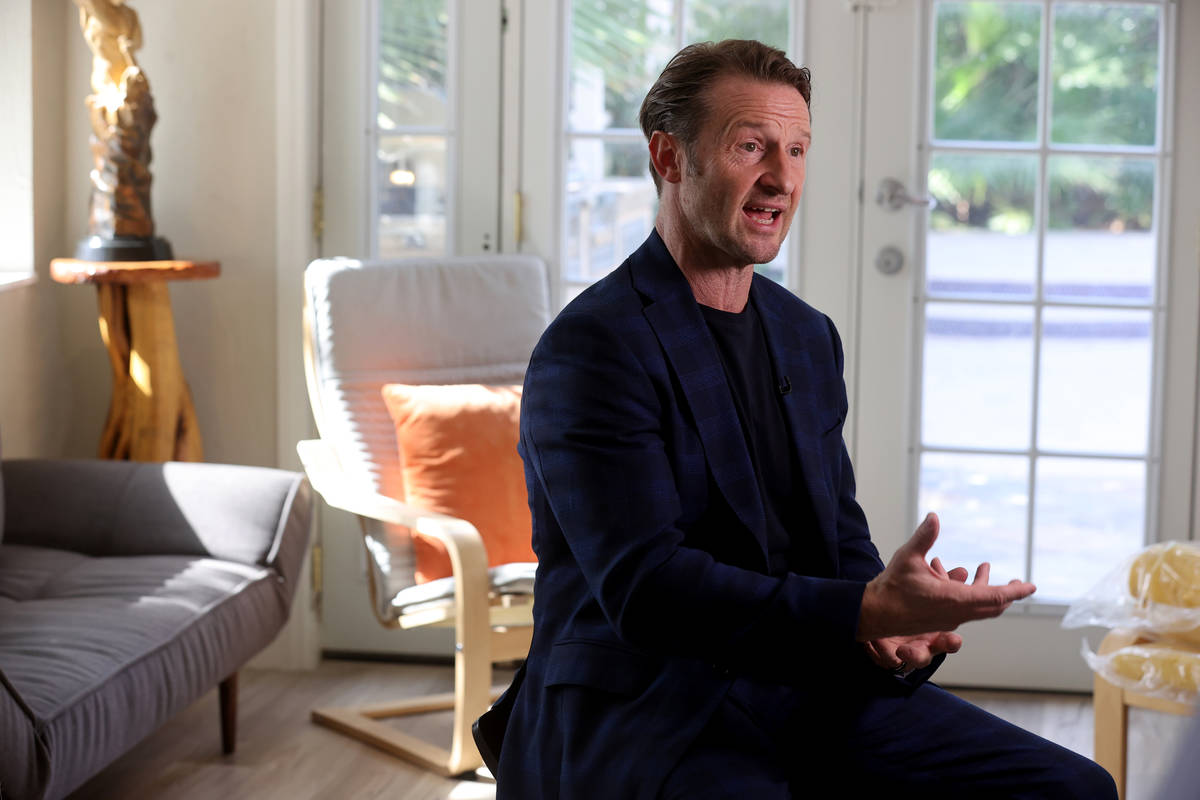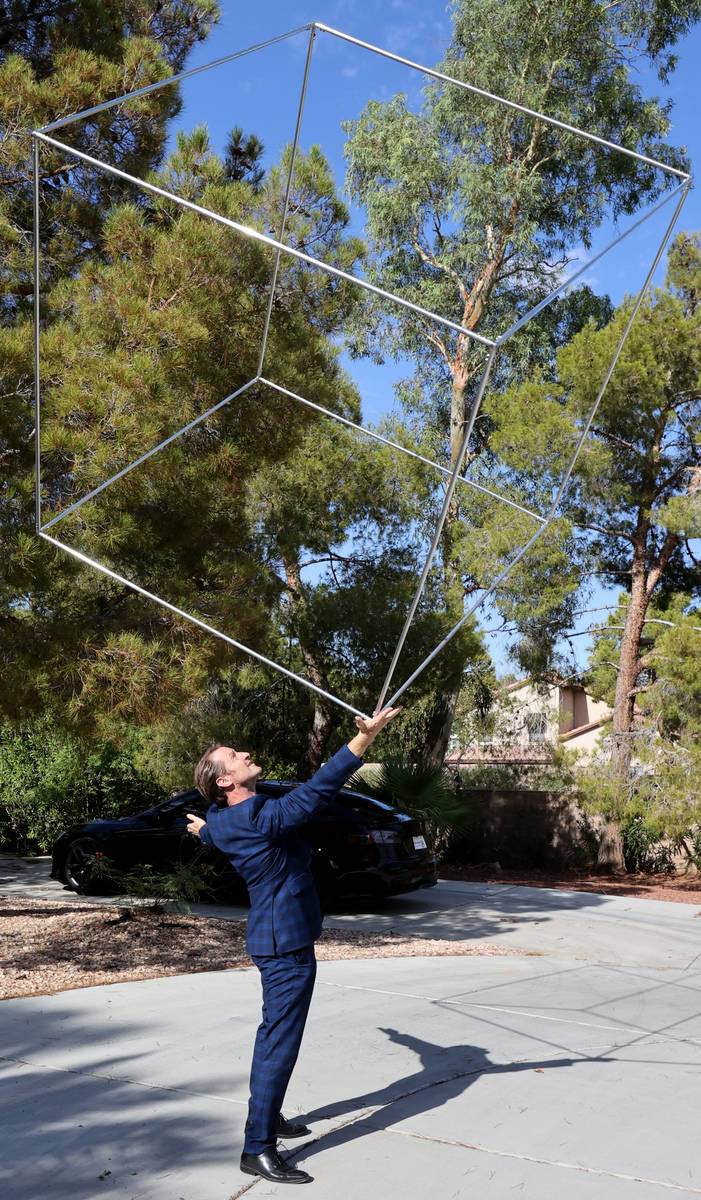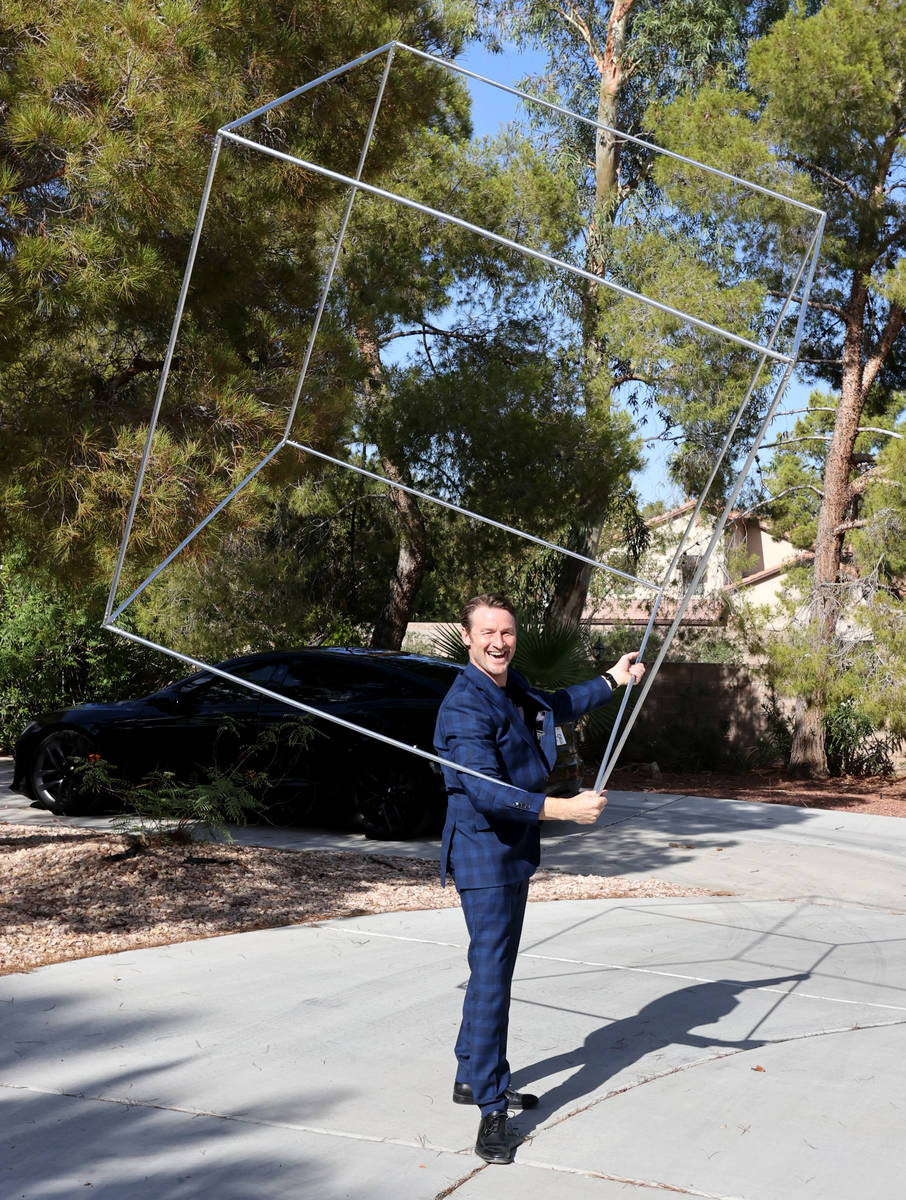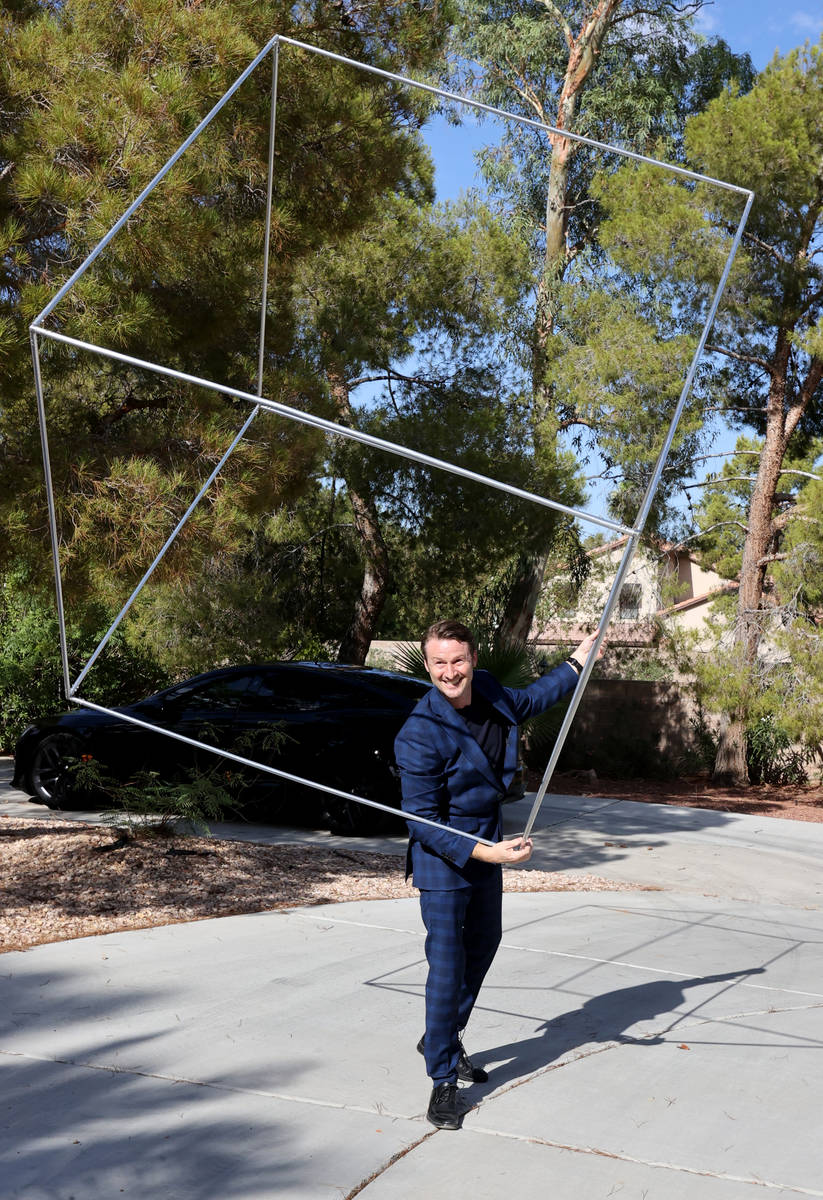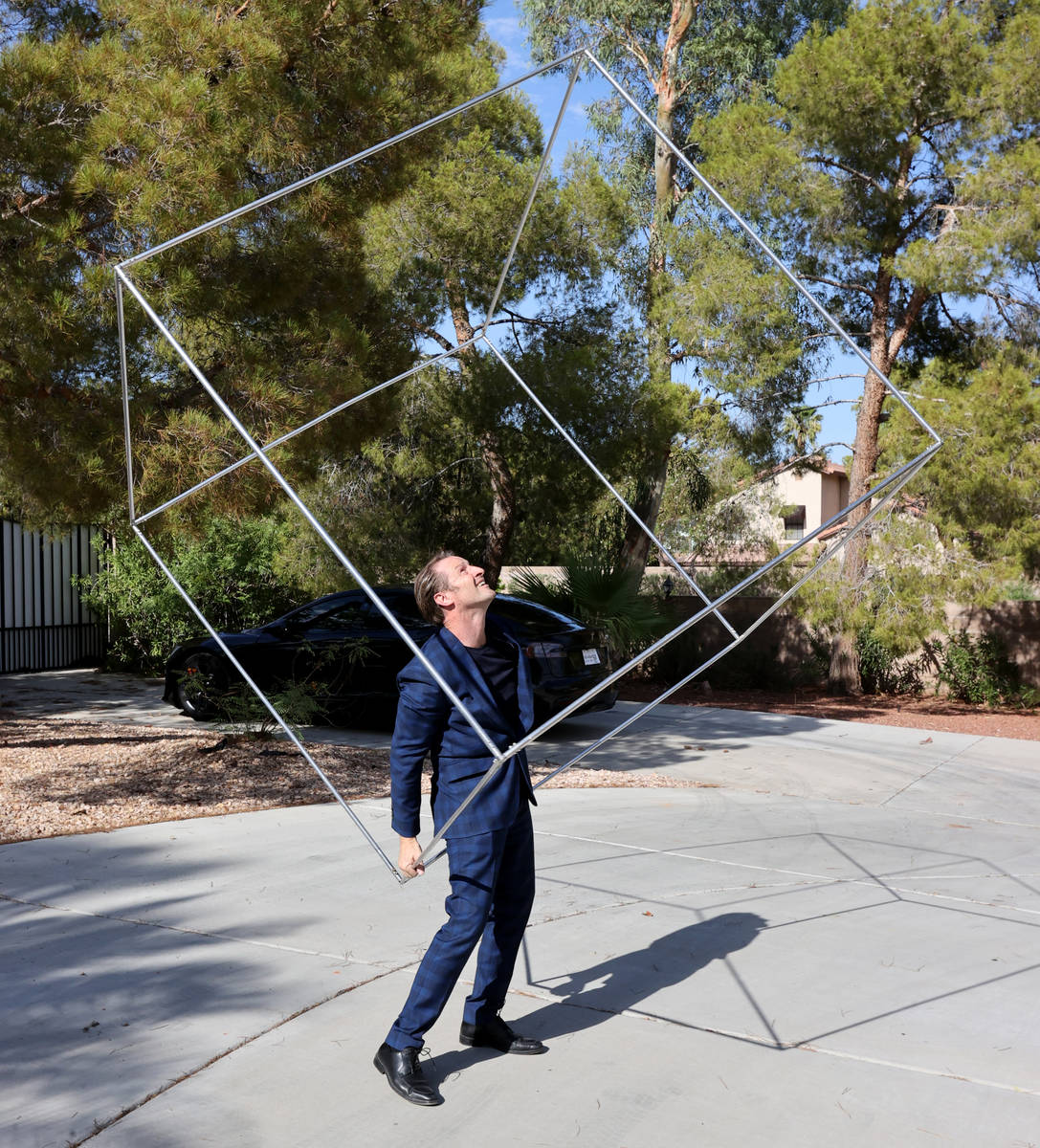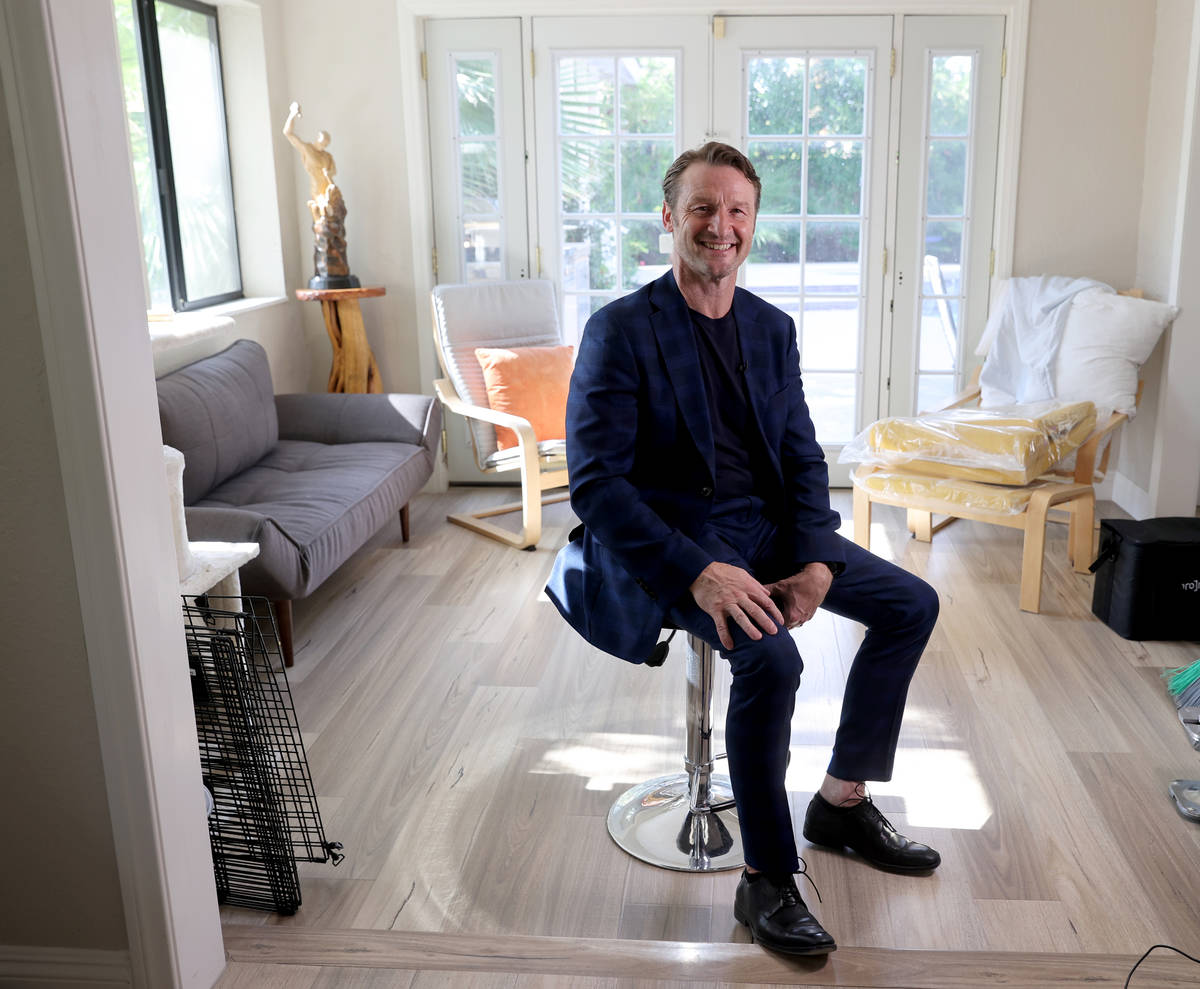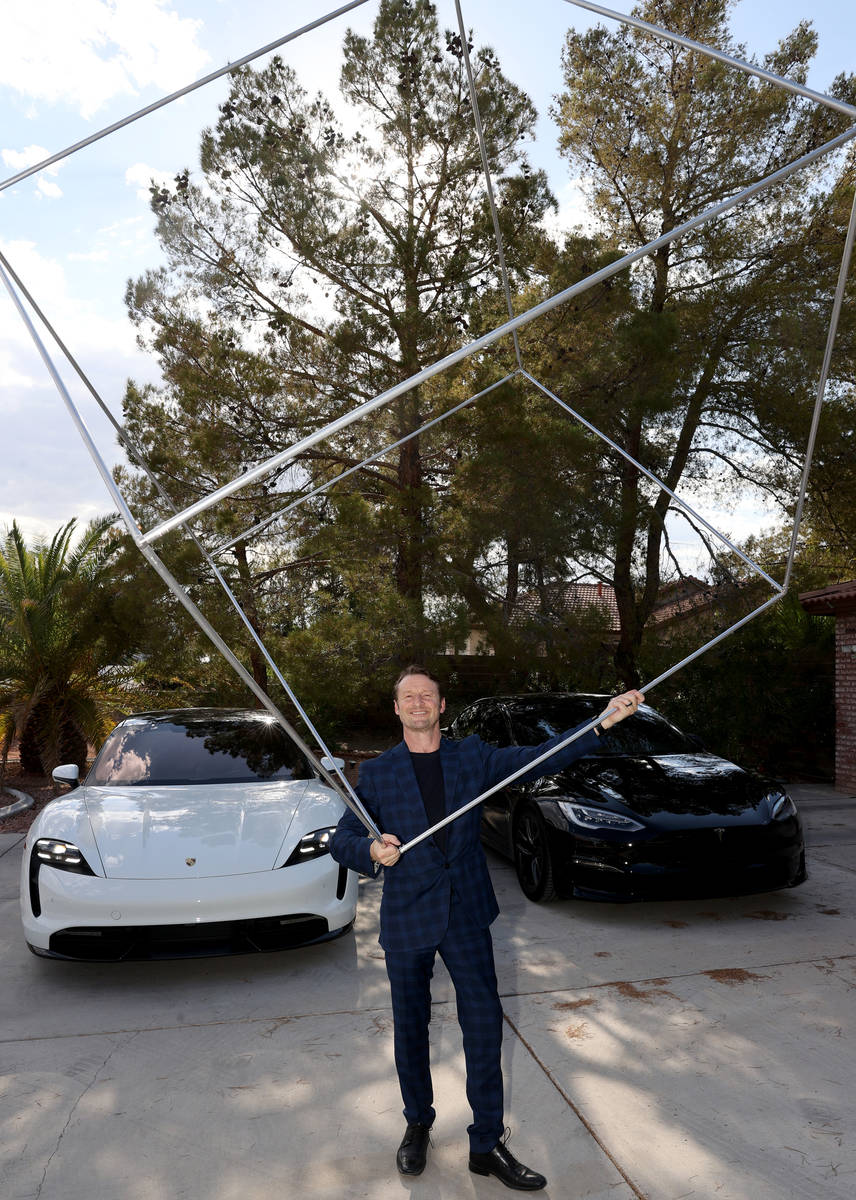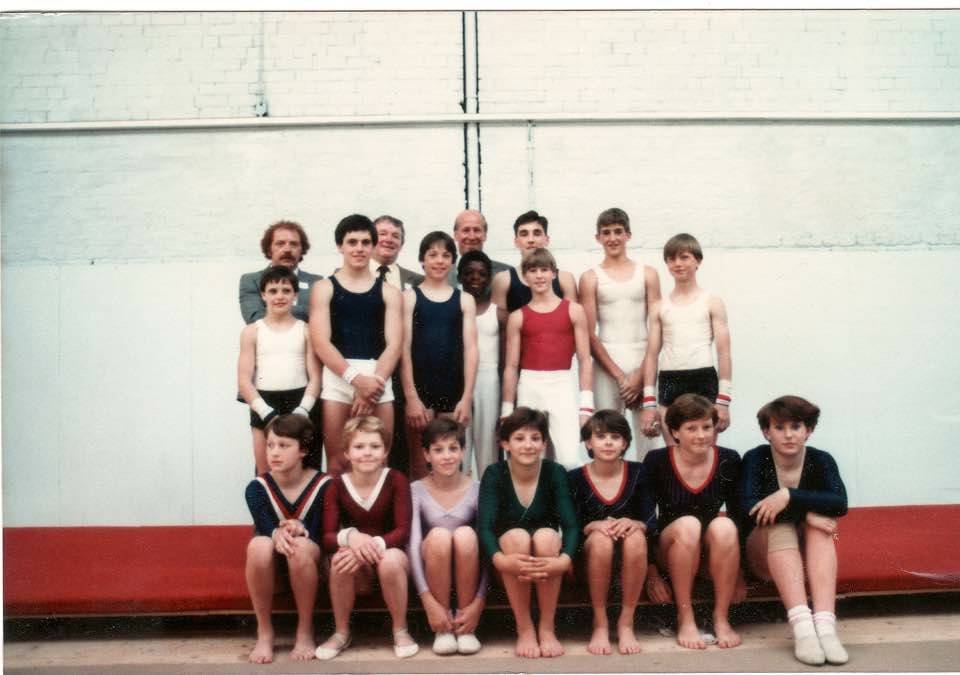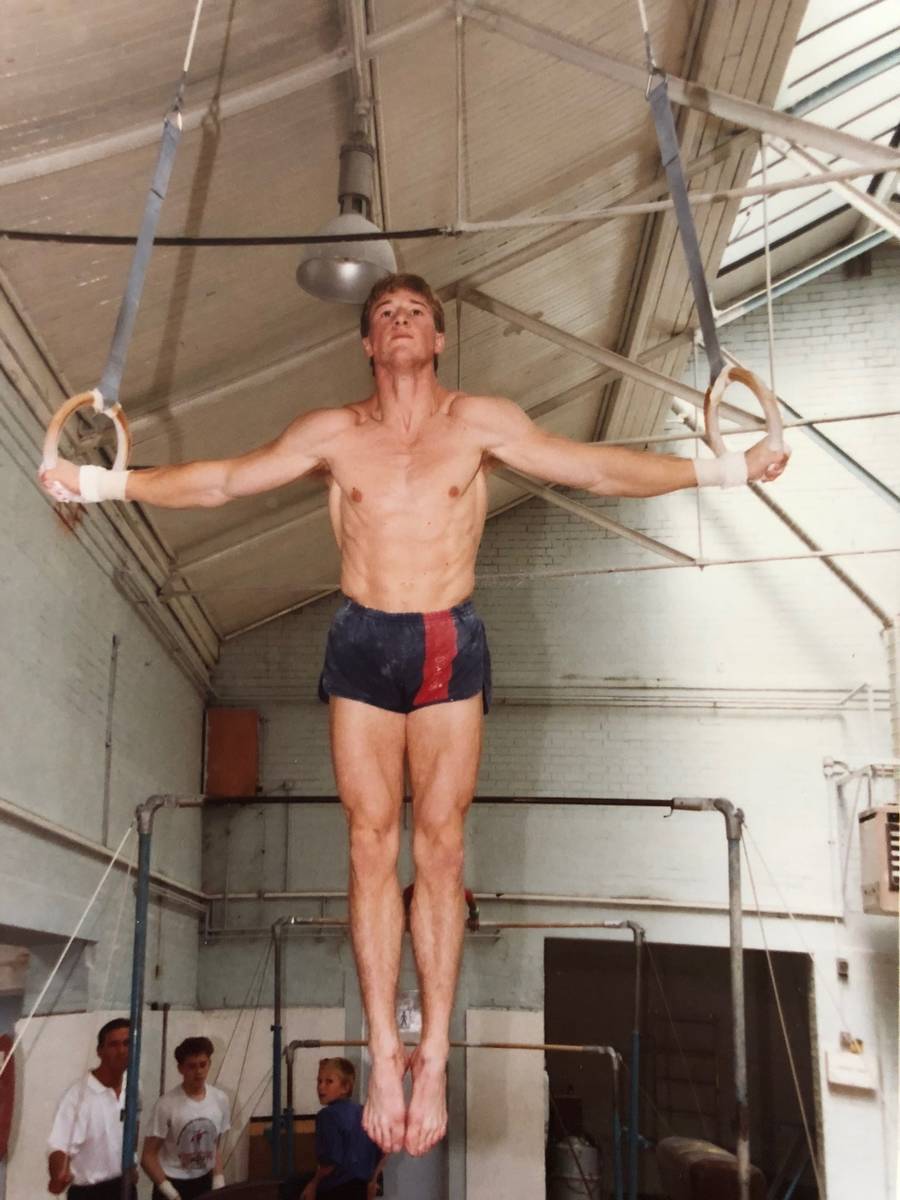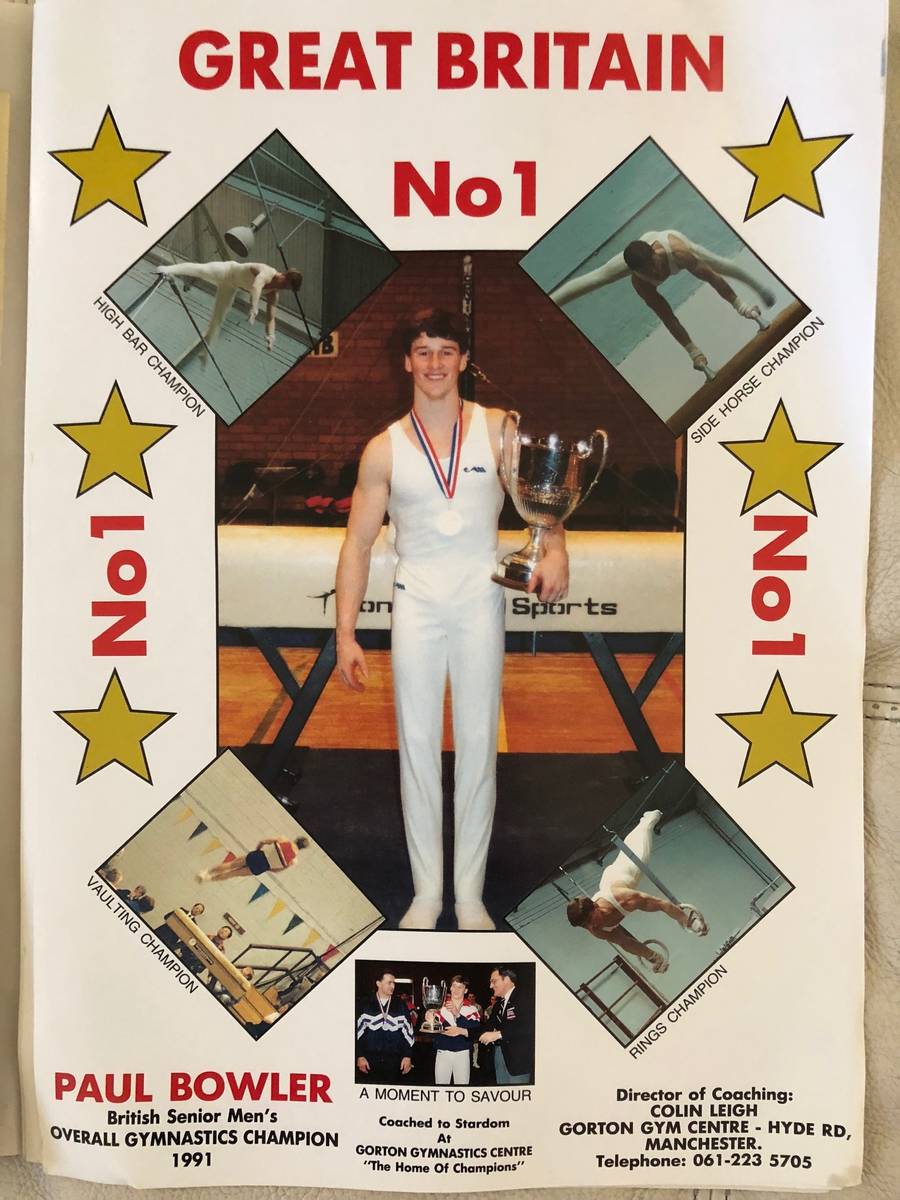Former Olympian, Cirque performer finds new niche in real estate
Paul Bowler picks up the contraption in his yard — an open cube with aluminum arms that weighs about 10 pounds — positions one of its corners on the palm of his hand and sets the whole thing to spinning like a top. He holds it in the air, casually tossing and catching it — a captivating demonstration of a skill few others would have thought to devise. But break it down and the scene is a pretty fair representation of Bowler’s life so far.
His agility and athleticism? That’s Bowler’s youth as a world-class gymnast who represented Great Britain at the 1992 Summer Olympics in Barcelona, Spain.
The cube? That’s the prop he used when he appeared in, he figures, between 5,000 and 7,000 Cirque du Soleil performances around the world and in Las Vegas after he retired from gymnastics.
And the sharp suit he’s wearing? Standard attire for a Realtor, the profession Bowler pursued full-time after his sporting and entertainment careers ended and which has taken him through flush times, lean times and, now, flush times again.
Rambunctious beginnings
Bowler, 53, was born in Manchester, England and was, he says, “a typical pain in the ass kid” who by age 6 already loved running around, climbing trees and doing somersaults on the bed.
“Fortunately, that was channeled into gymnastics,” he says. “I’m just grateful my parents and the school I went to put me to the right direction.”
That started when Bowler was about 8 and was awarded a patch given to British schoolchildren who could demonstrate basic gymnastics moves (a few of which, Bowler now notes, were part of his Cirque act). He began competing in meets at 10, showing early natural strength and determination.
“I wasn’t pretty,” Bowler says. “But you can’t teach determination.”
His first official meet was a floor and vault championship, and he won bronze. “I thought I’d done really well because I got a bronze medal,” he says. He didn’t learn until later that there were only two other competitors in his age class.
Bowler said that, as an energetic, hyperactive kid, he took to gymnastics because “you can never get bored. There’s always something to learn. Then you have the excitement of the achievement, and you can measure it. And it’s the feeling of doing movement.”
He remembers how, when he was 13, his coach moved along a line of aspiring gymnasts, asking each about his goal.
“Boys said club champion, Northwest champion, regional champion. Then this kid at the end said, ‘I want to go to the Olympic games.’ That kid happened to be me. At that age, that was the dream.”
Dreams granted and dashed
In 1992, Bowler did go to Barcelona, Spain as a member of Great Britain’s men’s artistic gymnastics team. His most vivid memory is the opening ceremony and nearing the stadium while hearing the cheers of the crowd ahead.
“They walk you around the outside of the building and you hear (countries’ teams) being named, and you know that another half-revolution you’ll be walking in with the British flag,” he says. “It’s almost like a magical thing.”
He didn’t medal — there were “too many good Russians” and Eastern European and Chinese gymnasts, he says, some of whom later became Cirque colleagues — but he did earn a team bronze at the 1994 Commonwealth Games in Canada. He planned to represent Great Britain again at the 1996 Olympics in Atlanta, Georgia, but a knee injury in 1995 and missing a basic movement at the Olympic trials, his first competition after rehab, ended that.
The movement was called “forward circle to handstand on the high bar,” he says. “I’ve done it a hundred times. But somebody had a different plan somewhere on the line.”
Bowler retired from gymnastics and tried to adjust to a life that didn’t include 35 hours of practice each week. He taught gymnastics and even auditioned for a Christmas pantomime as a pirate in “Peter Pan.” Then, through a friend, he learned that Cirque du Soleil was holding auditions in London.
Joining the circus
“It went very well,” he says of the audition. “I was confident I was going to get something.”
A few months later, Cirque called. In late 1996, Bowler came to Las Vegas and began learning the aerial cube, a showcase solo act in “Mystere.” He performed for the first time in Amsterdam in “Alegria,” which was touring Europe, then began performing the act in “Mystere” at Treasure Island.
The act involved manipulating a cube while suspended 50 feet in the air. During one practice, Bowler dropped the cube three times, prompting his trainer to yell that nobody in the audience is paying $100 to see “a weak, pathetic (expletive) gymnast onstage.”
As a Cirque performer, Bowler experienced a degree of fame and attention he never saw as an Olympic gymnast. As an Olympian, “I was famous in my small fish bowl,” he says, because gymnastics “didn’t have a massive following in my time.” But while touring in Europe with “Alegria” in 1997 and 1998 and performing in “Mystere” at Treasure Island from 1999 to 2014, he met celebrities, performed for the Queen, saw his image on subway billboards, was interviewed for TV shows and publications, and was wined and dined as never before.
It wasn’t about him, he adds, but Cirque du Soleil. Still, Bowler says, the relatively small measure of fame he knew as a world-class gymnast was “amplified when I met Cirque du Soleil. That’s where you feel like a mini rock star.”
Matt Nickel, Cirque’s vice president of operations, says Bowler’s “discipline as an elite athlete was always present in his work ethic at ‘Mystere’ as an aerial artist. Paul was the opening act of ‘Mystere’ for a long period. He was a pleasure to work with.”
Real (estate) dreams
Thanks in part to an injured shoulder, Bowler left Cirque du Soleil in 2014. But he had already begun preparing for his third career in 2003 when he earned his real estate license. Bowler — who still owns property in England — says he always had enjoyed real estate, and his first clients included several Cirque colleagues.
Bowler estimates that he closed on 100 homes and earned $750,000 in commissions in 2004, his first year, which came during a roaring real estate market. “Ferraris started to appear,” he jokes.
Then came the market’s collapse. “I lost the whole thing” between 2009 and 2011, Bowler says. “It was very humbling but I’m very grateful it happened as a lesson. I had two children at the time and wasn’t seeing much of the children. I was stressed. I had 24 mortgages (for 12 properties, 11 of which were investments).
“In 2010 I had to liquidate everything, and I started all over again. So I’m self-made twice over. Now I have a couple of properties, but I don’t have the kids in private school.”
Instead of an upscale gated community, he lives on a half-acre property “in the center of town, with squirrels and hummingbirds and 35 pine trees. I’m not behind a gate and I love it.”
He does have a cabin on Mount Charleston and two sports cars, too. “I don’t drink and I don’t smoke, but I do like fast cars,” he says. “But I manage my life much differently now, and I’m grateful.”
Bowler doesn’t follow gymnastics much, in part because it’s difficult to find American TV showing anything but American gymnastics and because he finds it dfficult to relate to the sport today.
“I’m still interested in the sport but very far removed. That’s fine, but I can’t relate to the sport now. The level they’re at now is mind-blowing.”
So does Bowler think of himself as a former Olympic gymnast who sells real estate, or a real estate guy who used to perform for Cirque du Soleil, or, maybe just a guy with a really unusual resume? He passes on all three.
“I’m just that little cheeky boy that used to do somersaults on the bed, basically,” Bowler says.
Contact John Przybys at jprzybys@reviewjournal.com. Follow @JJPrzybys on Twitter.




